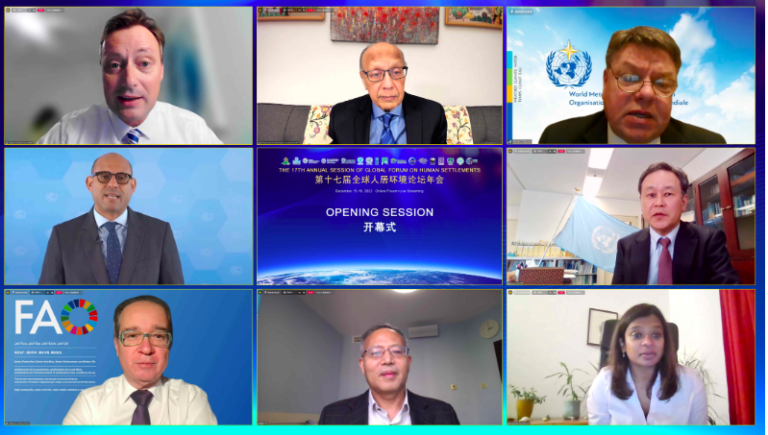Early warnings are vital for safe cities
“Together for a shared safer and greener urban future: resilient, carbon-neutral and nature-positive cities” was the theme of the 17th Annual Session of the theme of the annual session of the Global Forum on Human Settlements on December 15-16.

WMO was a co-organizer of the virtual event, which made a joint urgent call for substantial action and investment at the local and national level to greatly enhance urban resilience, inclusiveness, productiveness and sustainability, and build a safer, greener urban future for all.
WMO also led a thematic session on “Urban Hydrology and Integrated Water Resources Management” to engage key stakeholders, provide technical insights and facilitate cooperation at a wider scale.
WMO Secretary-General Prof. Petteri Taalas stressed the importance and urgency to provide early warnings for all, and shared the corresponding action plan which focuses on disaster risk knowledge, preparedness and response capabilities, detection, observations, monitoring, analysis and forecasting of hazards, and warning dissemination and communication.

“WMO’s main focuses is the Early Warnings for All initiative. UN Secretary-General Antonio Guterres tasked WMO in March to prepare an action plan for 2023-27 to reach 100 % coverage of early warning services globally. Today, only half of our 193 Members have state-of-the-art early warning systems in place,” said Prof. Taalas.
“To reach the 100 % coverage of Early Warnings during 5 years there is a need to invest in basic meteorological, climate and hydrological observing stations. Lack of national data has a severe negative impact on the accuracies of forecasts and prevents climate adaptation planning,” he said.
Ambitious partnerships are needed for reliable climate prediction. Current global climate models struggle to represent precipitation and related extreme events, with serious implications for the physical evidence base to support climate actions. A leap to kilometer-scale models could overcome this shortcoming but requires collaboration on an unprecedented scale, said Prof. Taalas.
WMO led a thematic session on ‘Water’s Role on Early Warning Systems’ that emphasized the importance of Early Warning System for all and how integrated water resources management can serve as an accelerator for climate change adaptation in the context for early warning.
Its key messages included:
- Multi hazard early warning systems help significantly in reducing the damage and impact of hydrometeorological hazards and are necessary investment with generally a very high return to society.
- Placing the water perspective, early warning systems plan for water cycle uncertainty across sectors and support the implementation of integrated water resources management. An approach that leads to many co-benefits.
- Better understanding of water through data and information enables to make better predictions and is essential for early warning systems. However, 60 percent of countries report declining numbers of observing systems and the data produced is not consistent at a global or a regional scale. To bridge this gap, HydroSOS supports the integration and ongoing development of status assessment and outlook capabilities (baseline hydrological data, statistics, modelling results and further information) that is imperative for making Early Warning systems more effective.
- At a community level, community acceptance and responsiveness to early warnings are essential in effective end-to end early warning systems. This requires building local and national capacities through systematic training and education and implementing disaster preparedness plans and community awareness programmes
The forum was addressed by guests such as Ambassador Anwarul K. Chowdhury, Chairman of Global Forum on Human Settlements, Former UN Under-Secretary-General and High Representative and Mr. Simon Stiell, Executive Secretary, The United Nations Framework Convention on Climate Change. The two-day forum has reached over 100,000 professional audiences through live streaming and remote participation.

